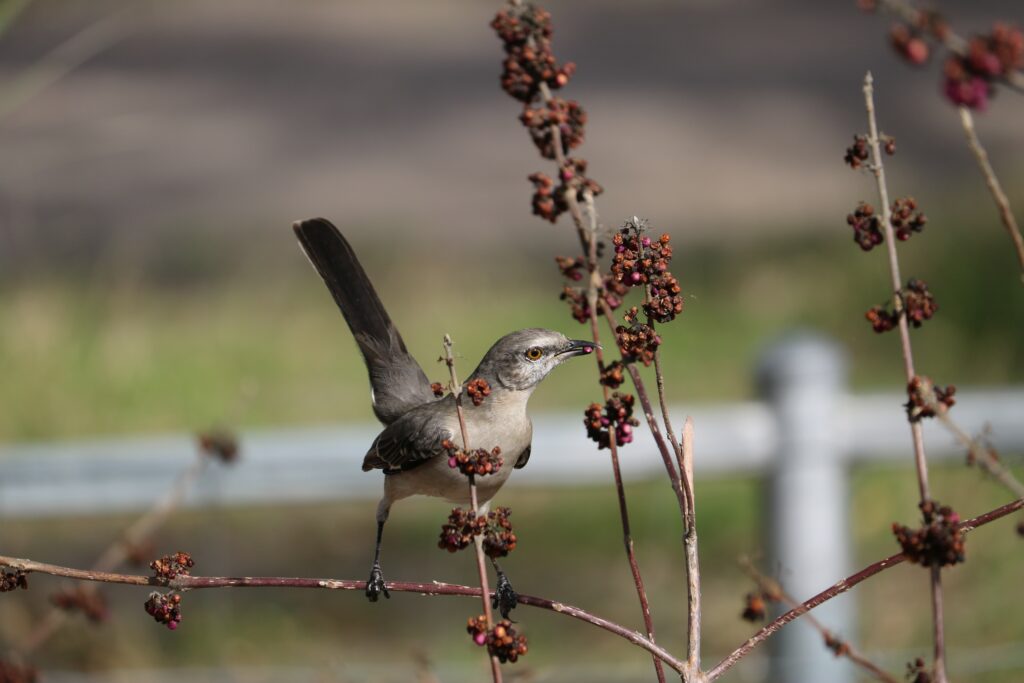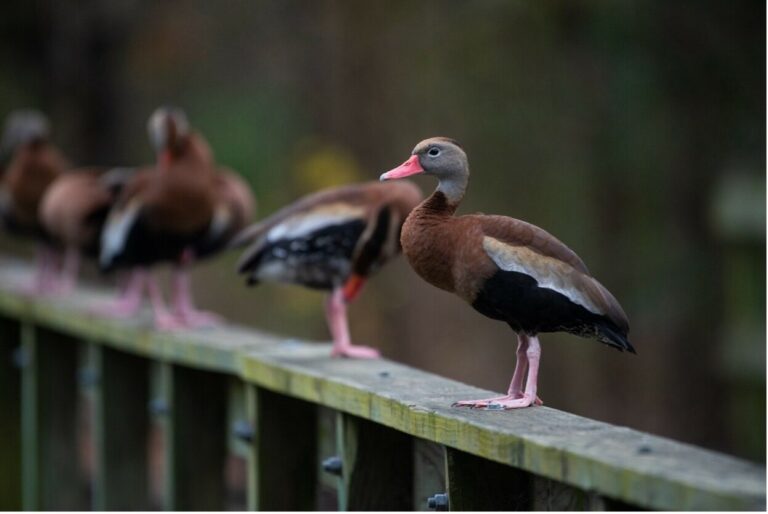Última actualización el 30 de enero de 2024
Esta semana, observadores de aves En todo Estados Unidos están completando febrilmente sus avistamientos en Audubon 123tercero Conteo de pájaros navideños, que culminará con la celebración del Día Nacional de las Aves el 5 de enero. Este conteo anual de aves es el proyecto científico comunitario sobre aves de mayor duración en el país, y el Cuenca del río San Antonio, también conocida como la Cuenca del Río San Antonio, ¡es un lugar privilegiado para participar! En el blog de hoy, celebramos el Día Nacional de las Aves analizando la deslumbrante diversidad de aves que encontrará en nuestra cuenca durante el invierno y brindando consejos sobre cómo puede ayudarlas.
Pájaros del patio trasero de invierno
Quizás esté familiarizado con el Cardenal del Norte (Cardinalis cardinalis) y Ruiseñor del Norte (Mimus políglota) porque viven todo el año en el Cuenca del río San Antonio y se encuentran con frecuencia en paisajes residenciales. Sin embargo, hay muchas otras aves migratorias interesantes que viven aquí solo durante el invierno, ¡y es posible que puedas detectarlas si lo intentas! Todo lo que necesita hacer es salir y escuchar sonidos como el canto de los pájaros, picoteando la madera o hurgando entre las hojas caídas en busca de comida. Aunque muchos son tímidos y pueden esconderse de ti, ¡puedes tener suerte! No te rindas si no detectas ninguno de inmediato. Los pájaros también pueden ser curiosos y, con paciencia, podrás verlos bien mientras intentan mantenerse calientes y alimentados.
Cardenal norteño en ambrosía gigante a lo largo del río San Antonio
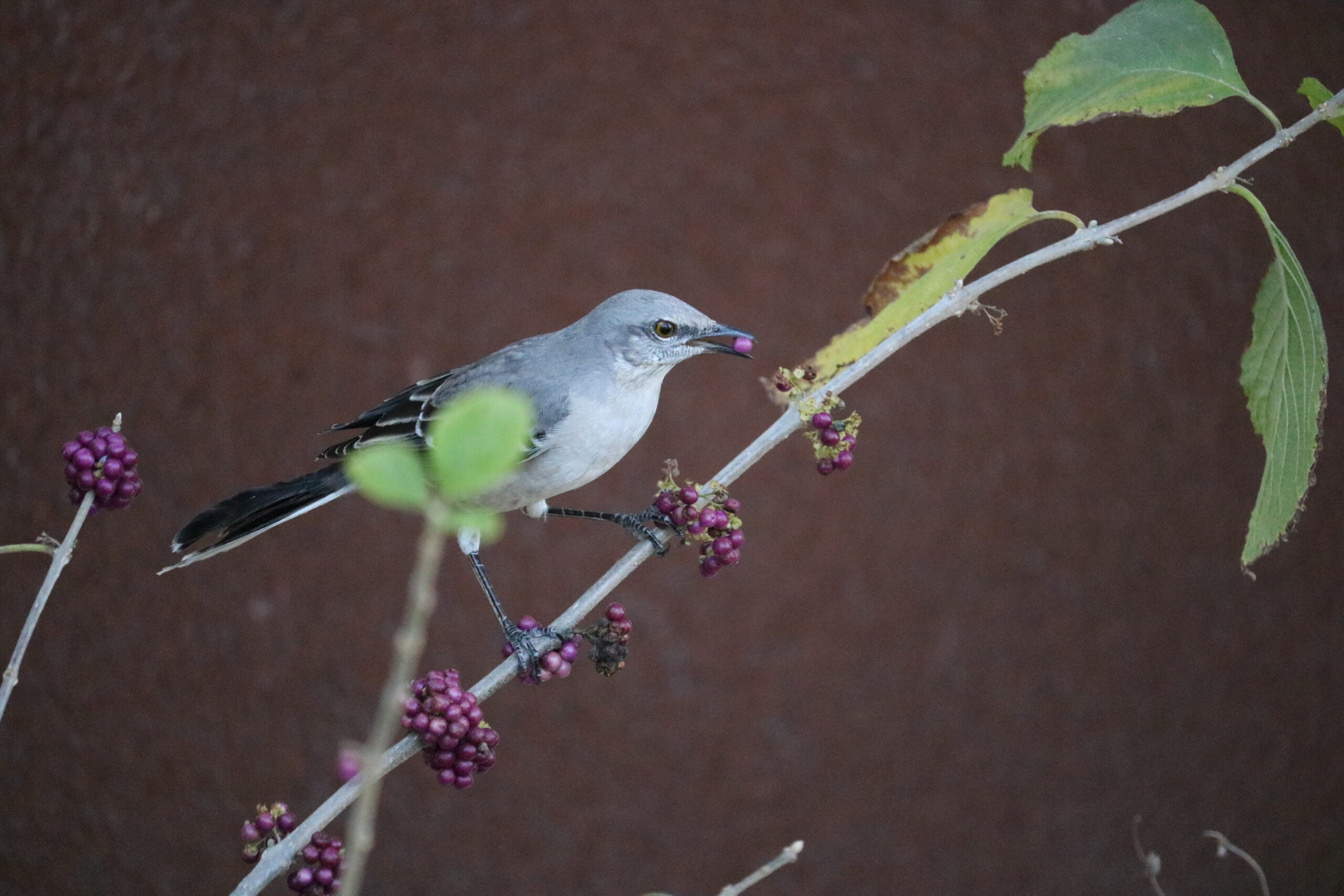
Northern Mockingbird comiendo Beautyberries americanos en Confluence Park
¿Cómo puedes ayudar a las aves invernantes?
Las aves comparten las mismas necesidades básicas que los humanos, incluyendo agua, alimento y refugio. Una de las mejores maneras de apoyar a las aves que visitan durante el invierno es proporcionar agua limpia en un lugar seguro lejos de los depredadores como gatos salvajes. Un plato simple y poco profundo funciona bien para muchas aves y es mejor usar uno que no tenga una superficie resbaladiza. Colocar una roca estable y poco profunda en el plato o una rama delgada a través del plato puede ayudar a las aves a acceder al agua. Si tiene un barril de lluvia, es posible que pueda dejar que gotee lentamente en un plato poco profundo para cumplir este propósito. Gotear agua en el plato ayuda a llamar la atención y puede atraer más aves.
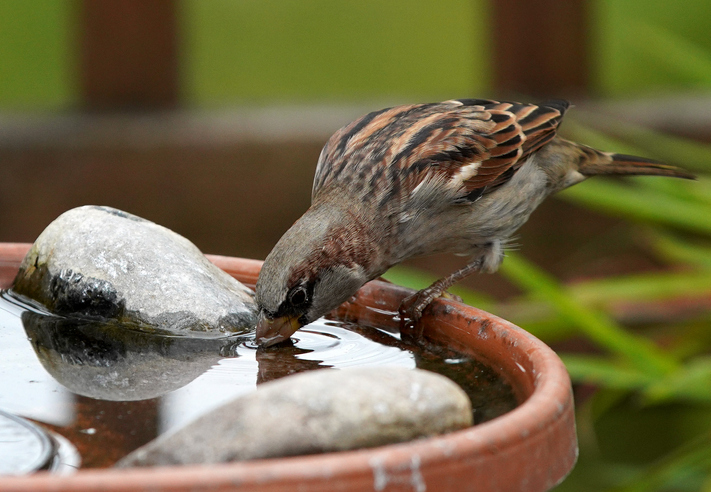
Gorrión macho bebiendo de un plato poco profundo
Otras formas de ayudar a las aves invernales incluyen plantar y cuidar arbustos nativos que las aves pueden utilizar como refugio y cobertura durante las temperaturas frías y plantar plantas nativas que proporcionan semillas, bayas y nueces para las aves. Algunas de las mejores plantas para nuestra cuenca se incluyen en las descripciones de aves invernales comunes que siguen.
¿Qué pájaros hay aquí en invierno?
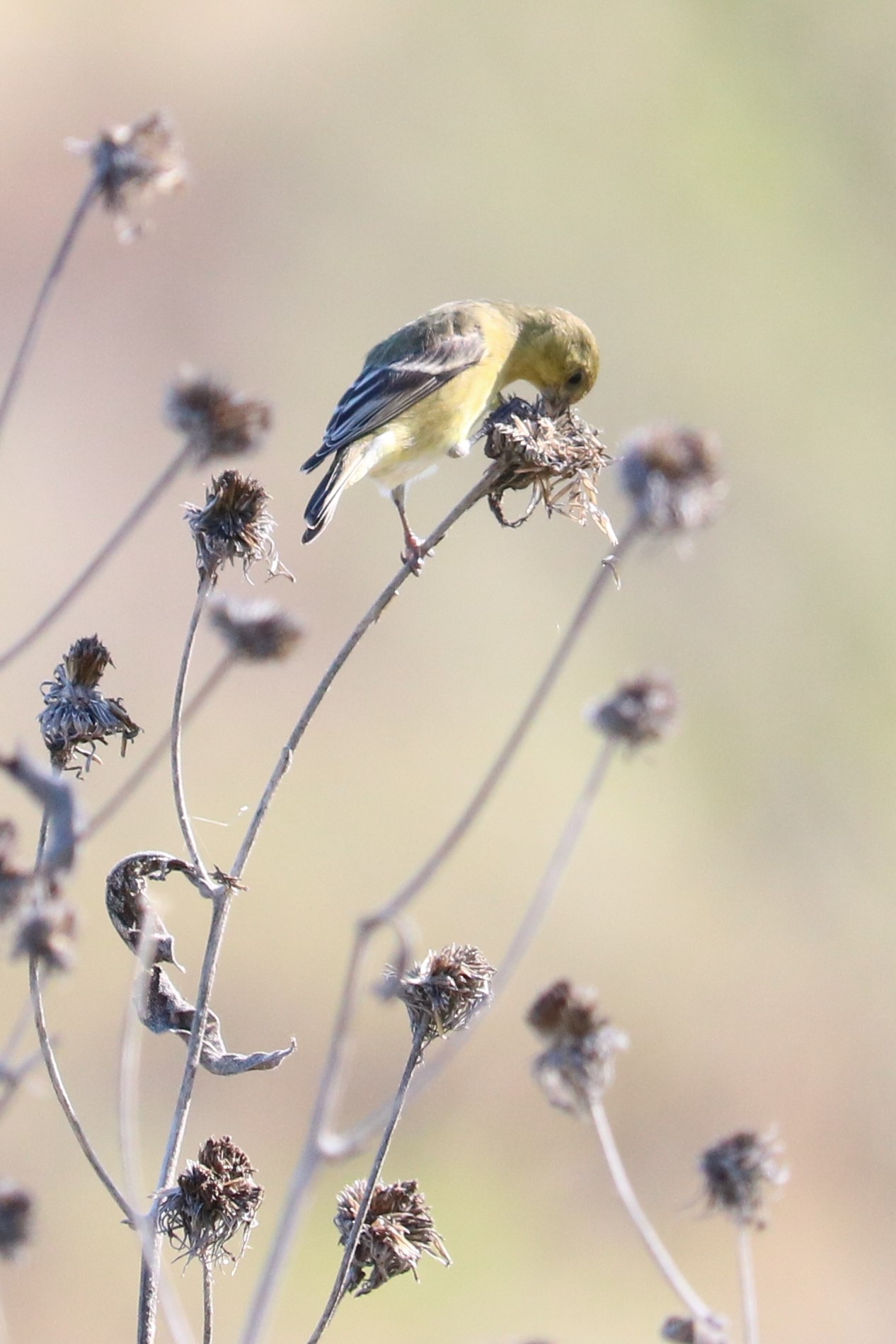
Jilguero americano comiendo semillas de girasol a lo largo del río San Antonio
jilguero americano, Espino tristis
Los jilgueros americanos son migrantes de corta distancia que se reproducen y pasan el invierno en los EE. UU. y Canadá. Estas aves se pueden encontrar alimentándose de semillas de girasol común, girasol Maximillian y ambrosía gigante en el invierno, ¡así que deja esas semillas donde puedas! También se alimentan de semillas de sicómoro americano y se sienten atraídos por los comederos para pájaros. Los machos del jilguero americano tienen colores brillantes en amarillo y negro durante la primavera y el verano. En el invierno, tanto los machos como las hembras son de color marrón amarillento apagado y tienen alas negruzcas con dos barras o rayas pálidas.
Cómo ayudar al jilguero americano en invierno: ¡Deja los tallos con semillas!
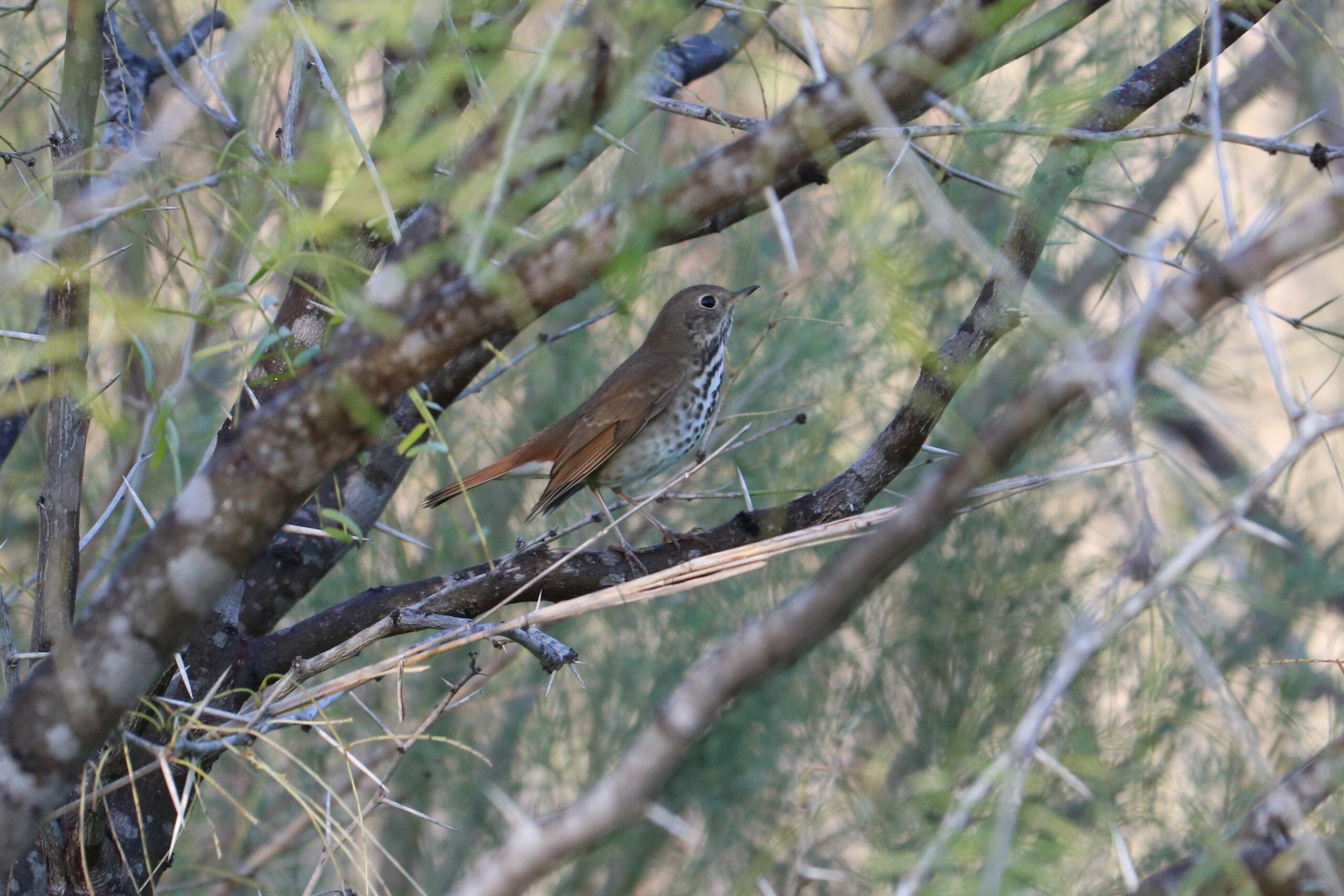
Zorzal ermitaño encaramado en Honey Mesquite a lo largo del río San Antonio
Zorzal ermitaño, Catharus guttatus
El zorzal ermitaño es otra especie migratoria de corta distancia y es el único zorzal norteamericano del género. Cátaro para pasar el invierno en los EE. UU. Estas aves tienen manchas oscuras en la garganta y el pecho con una cola de color marrón rojizo, cabeza y espalda marrones y vientre de color claro. Encuentre al zorzal ermitaño hurgando entre la hojarasca en busca de insectos o comiendo bayas en árboles o arbustos, incluido Yaupon Holly.
Cómo ayudar al Zorzal Ermitaño en Invierno: ¡Deja las hojas!
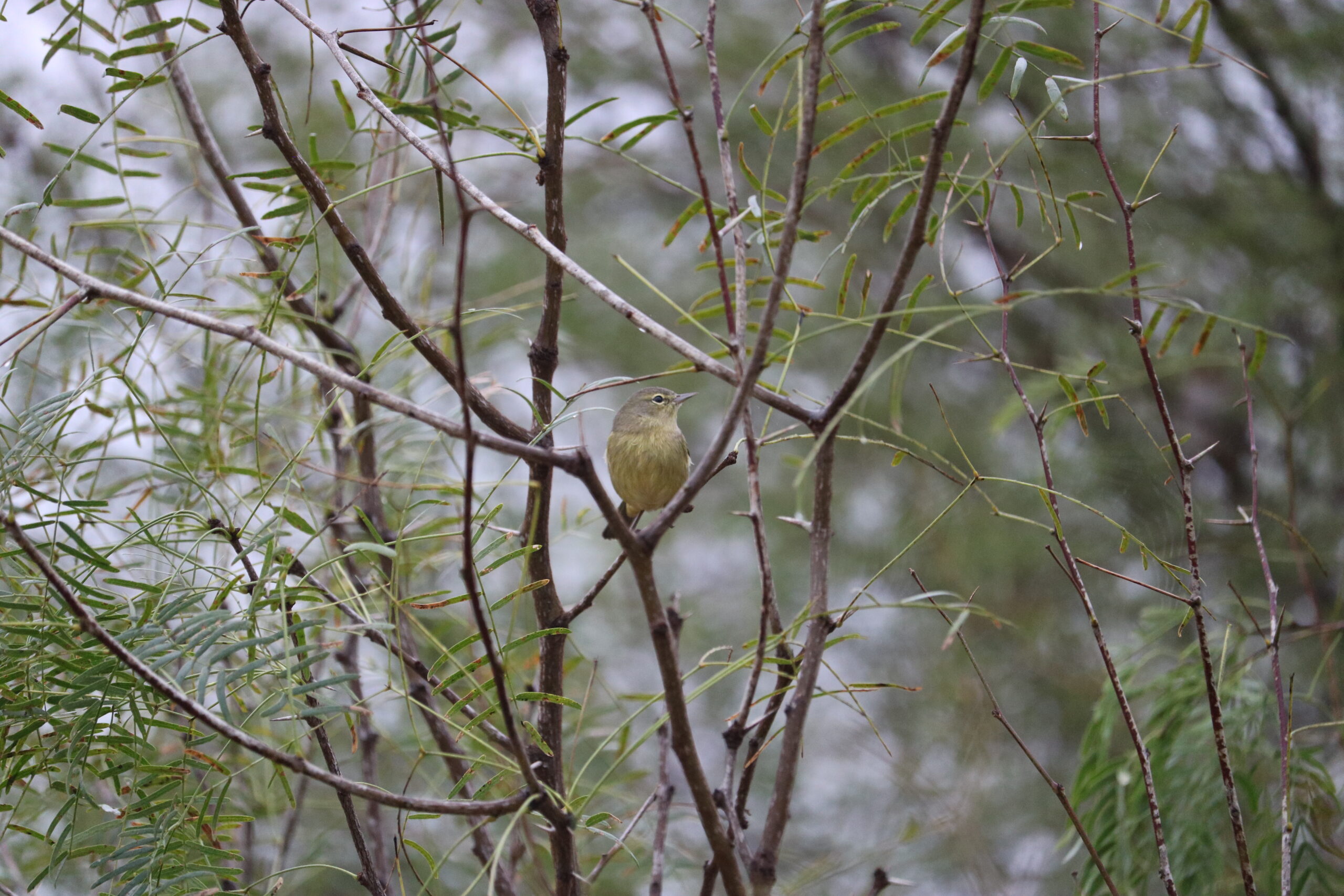
Reinita de corona naranja posada en Honey Mesquite a lo largo del río San Antonio
Reinita coronanaranja, Leiothlypis celata
La Reinita Corona Naranja migra distancias medias a largas, lo que significa que pueden viajar distancias de ida entre unos pocos cientos de millas y más de 12,000 millas entre sus zonas de reproducción y de invernada. Estas aves son generalmente de color amarillo pálido a oliva en general, con gris en las alas y la cabeza. Rara vez verás la corona naranja que les da nombre. Encuéntrelos en arbustos densos o vegetación baja, en busca de insectos para comer y, ocasionalmente, en comederos de sebo.
Cómo ayudar a la reinita coronada anaranjada en el invierno: ¡Plante arbustos densos y vegetación baja!
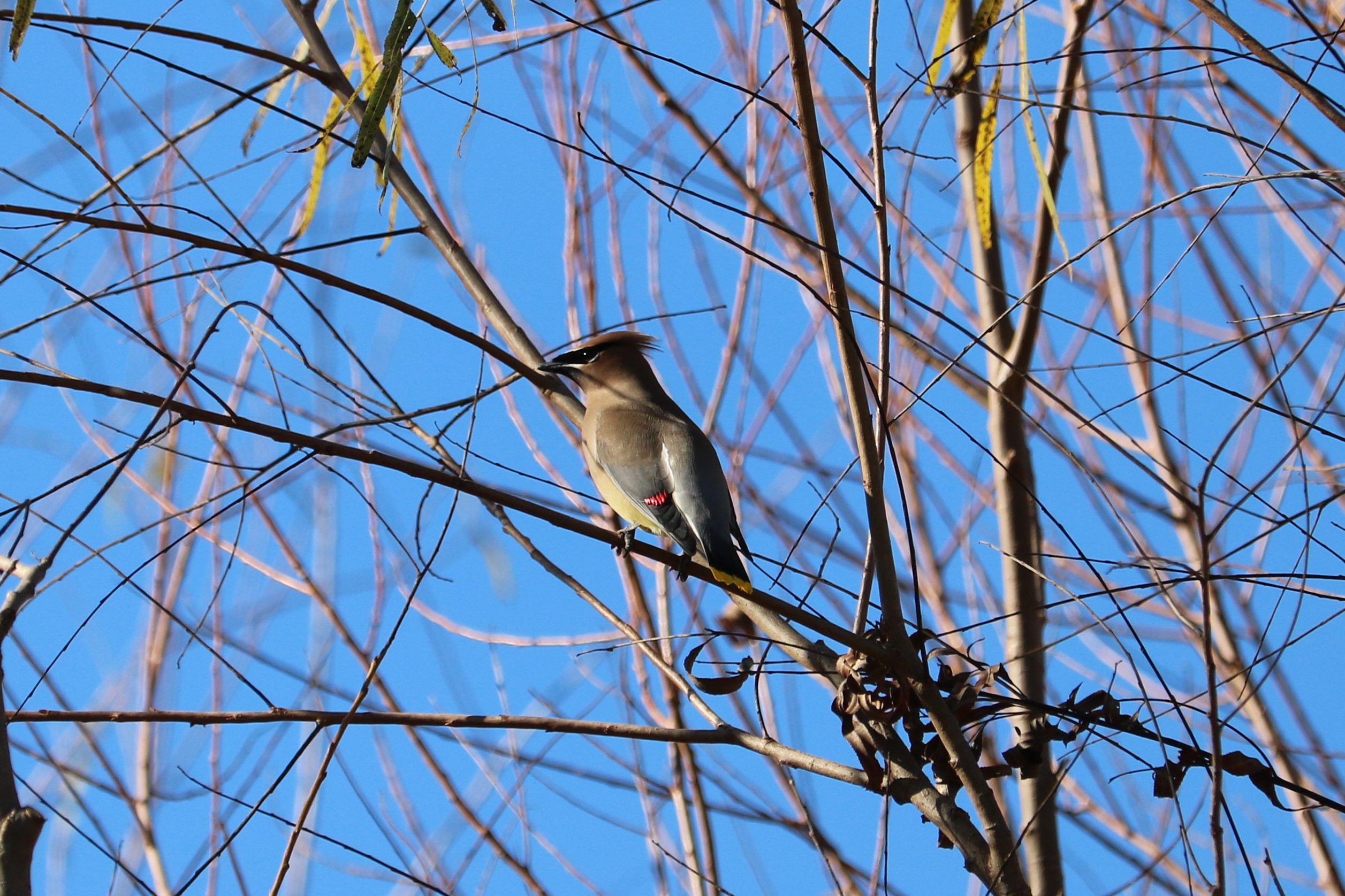
Cedar Waxwing encaramado en un sauce negro a lo largo del río San Antonio. Escuche su característico llamado agudo.!
ala de cera de cedro, Bombycilla cedrorum
Los Cedar Waxwings son migrantes de cortas y largas distancias, y algunos viajan hasta Costa Rica y Panamá para pasar el invierno. Por lo general, se los escucha antes de verlos, y a menudo aparecen en grupos grandes deleitándose con bayas de Yaupon Holly, Possomhaw y Ashe Juniper (también llamado Cedar en nuestra área). Es un espectáculo asombroso ver a los sinsontes del norte solitarios tratando de proteger las bayas en sus territorios defendiéndose de cientos de Cedar Waxwings, ya que los Waxwings pueden desnudar los árboles en minutos. Las Cedar Waxwings tienen un color con una punta de color amarillo brillante en la cola, un vientre amarillo, un dorso gris, una cabeza castaña con una cresta baja y una máscara negra delineada en blanco.
Cómo ayudar a Cedar Waxwings este invierno: ¡Plante arbustos y árboles de bayas nativas que dan frutos de invierno!
Aves Saludables = Un Río San Antonio Saludable
Todos podemos celebrar y apoyar a las aves satisfaciendo sus necesidades básicas durante todo el invierno, sin importar el tamaño de nuestro espacio, ya sea un balcón, un patio, un parque comunitario u otra área. ¡Esto no solo ayudará a las aves, sino que también contribuirá a ecosistemas y comunidades más saludables en toda nuestra cuenca!
Regístrate en River Reach
Alcance del río es un boletín trimestral de 12 páginas diseñado para informar a los electores de la Autoridad del Río San Antonio sobre los numerosos proyectos de la agencia, servir como vehículo de comunicación para la junta directiva y fomentar un sentido de unidad e identidad entre los residentes de Bexar, Wilson. , Karnes y Goliad.
Si desea ser incluido en la lista de correo de Alcance del río, por favor Contáctenos o Complete el formulario.

